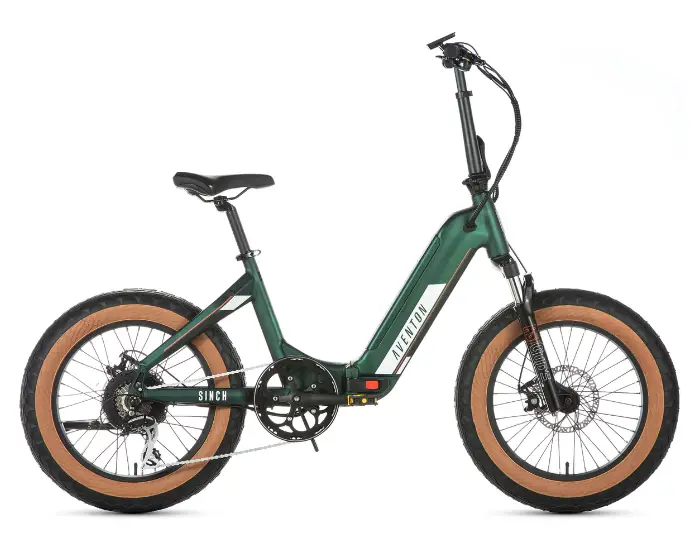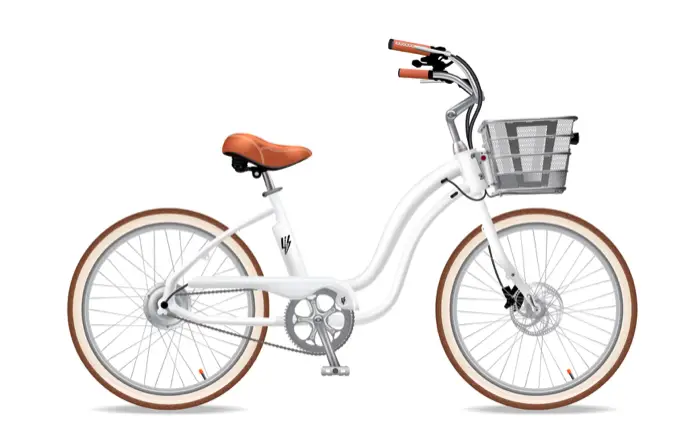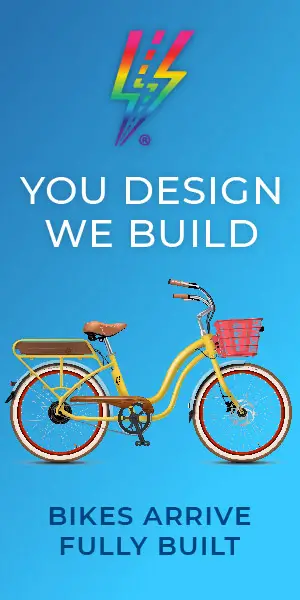There are so many types of e-bikes to choose from, each with a different price tag. To avoid making a bad investment in your e-bike purchase, it’s important to understand the different types of e-bikes that are available, as well as their associated costs.
The average cost to buy an e-bike is around $1600. The price of an individual e-bike, however, is strongly determined by its classification type, cost of parts and accessories, different uses and benefits, and ongoing care costs.
In this guide, I’ll break it all down so that you can get the real picture of the various costs involved in buying and owning an e-bike. Additionally, I’ll outline the differences between the five primary types of electric bikes and their costs.
What Are the Different Types of E-Bikes (Classification Guide)?
Electric bikes are classified into three different categories, based on their top speed and the type of assistance they provide. A pedal-assisted e-bike is one where the motor is only activated as you pedal, whereas a throttle-assisted e-bike can move the bike without you pedaling.
It’s important to know what class of e-bike you’re buying so that you can compare costs. Here’s a quick reference guide, based on general guidelines for each e-bike. Some states and countries have their own rules that differ, so it’s important to check the regulations for your own area.
| Class 1 | Class 2 | Class 3 |
| <20mph | <20mph | <28mph |
| Pedal Assist | Throttle Assist (+ pedal assist) | Pedal Assist |
| Any Age | Any Age | >17 Years |
| No helmet | Helmets under Age 18 | Helmet |
Keep in mind that the requirements for minimum age, as well as wearing a helmet, are officially regulated by individual states and may differ.
Class 1 Electric Bike
Class 1 e-bikes are known as ‘low-speed electric bicycles’ or ‘low-speed pedelecs’. A pedelec, short for ‘pedal electric cycle’, is a nickname given to e-bikes that have a motor that is only engaged when you pedal. This can be a pedal-assisted e-bike, but also some throttle-assisted e-bikes have this feature.
Low-speed e-bikes are only able to reach a speed of 20mph before the motor cuts out. This makes them pedelecs by nature.
Traditionally, this meant that the motor was activated as you started to pedal, but as I mentioned earlier, some manufacturers have included a throttle on their class 1 e-bike as well. To comply with the regulations, this throttle only works if you are pedaling the e-bike.
Class 2 Electric Bikes
Class 2 e-bikes are also low-speed electric bicycles but have a throttle, sometimes instead of pedal assistance. This means that the motor can be operated without the rider using the pedals, like a motorbike.
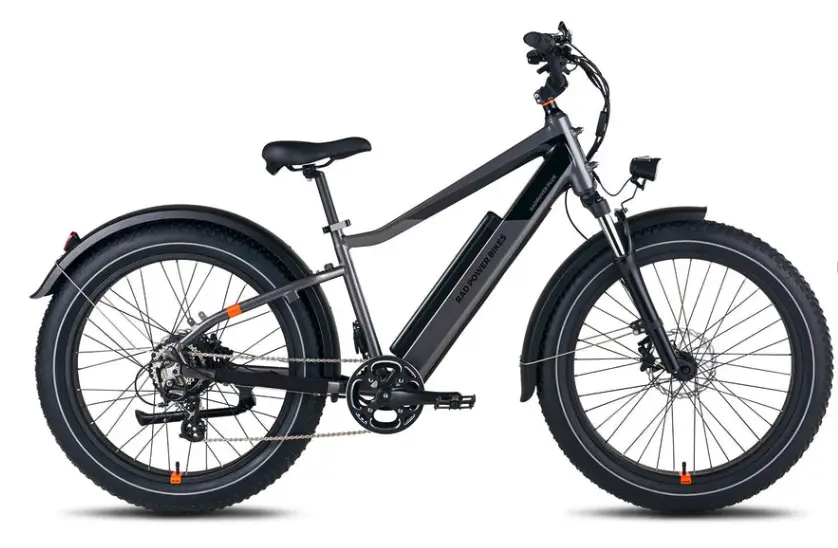
A class 2 e-bike still has to have functioning pedals to be classed as an e-bike; otherwise, it would be grouped together with small motor vehicles, such as the moped. This is a good regulation because if your battery runs out, you can still pedal the bike like you would on a normal bike.
Like class 1 e-bikes, these bikes are also capped at a top speed of 20mph. Once you have reached this limit, the motor won’t assist you to go any faster. However, you can go faster, up to 28mph by adding your own pedaling effort or by going downhill.
One downfall to throttle assist is that the e-bike battery is usually drained faster because people tend to rely too much on the throttle instead of their own pedaling. If the motor is pedal-assisted, the rider is forced to do some of the work, conserving battery life.
Class 3 E-Bikes
Also known as ‘speed pedelecs’, these bikes can reach a top speed of 28mph before the motor cuts out. Like class 1 e-bikes, they can only reach these speeds if the rider is pedaling. In general, they cost more because of their more powerful motor.
However, some manufacturers will also include a throttle assist in their class 3 models, with built-in technology that limits the speed to 20mph if the rider is not pedaling. This allows the bike to comply with regulations. Class 3 e-bikes must also have a speedometer.
Because of their higher speeds, class 3 electric bikes are more highly regulated. There is also more discrepancy in these regulations from state to state. In some states, you can’t ride a class 3 e-bike on a shared footpath or on a bike path that is not linked to a road. Other states will allow them to be ridden anywhere a class 1 or 2 electric bike can go.
So it’s important to check your state laws before choosing a class 3 e-bike, in case you won’t be allowed to ride where you had intended to.
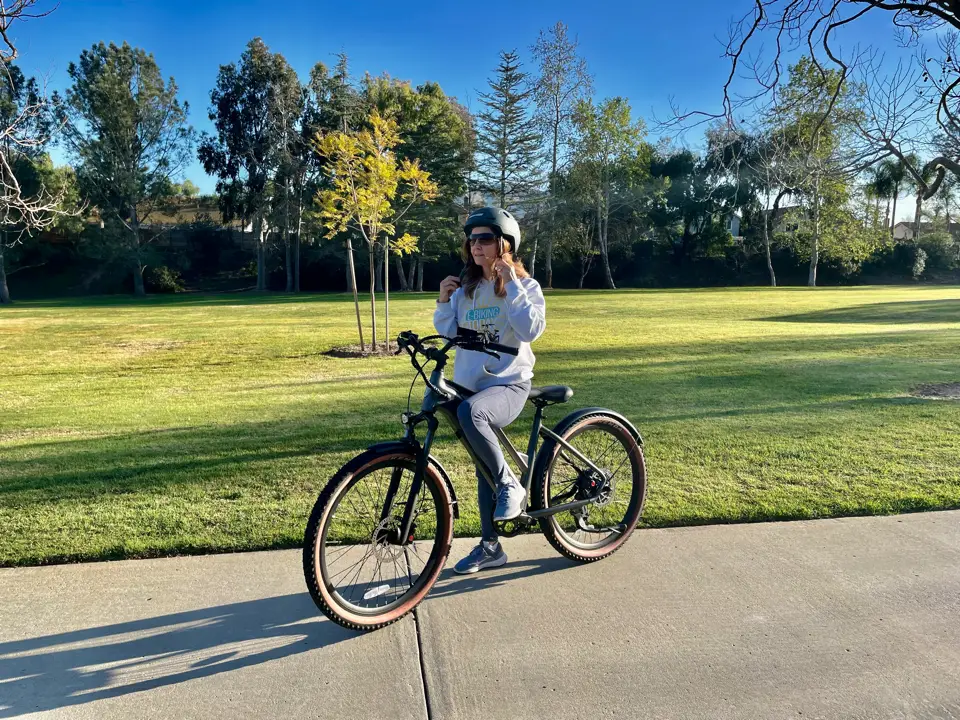
Read my full review of the Ride1Up LMT’D TORQUE-SENSING E-BIKE!
Why there’s an e-bike classification system
Because e-bikes became popular quite quickly, there weren’t many rules governing their use. This meant that you could potentially ride at high speeds along shared paths and bike lanes that were not achievable with a regular bicycle.
This raised safety concerns among the community about potential collisions at these speeds and inappropriate safety gear. For this reason, different countries adopted laws they deemed appropriate to limit how fast electric bikes could travel.
This meant regulated electric bikes could still have access to normal bike trails or shared paths and the rider wouldn’t require insurance or a special license to ride.
However, as I mentioned earlier, this is only true for class 1 and 2 e-bikes. Some places have enforced different rules for class 3 e-bikes and you aren’t able to ride where a normal bike could go.
Find out where you can ride legally in the USA.
Classification in countries outside the US
The above classification system was born in the USA. Other countries don’t refer as much to this classification system but have their own regulations. The most common e-bike regulations come from European legislation. Many countries adhere to this standard, including UK and Australia.
The main regulations for these countries include the following:
- An e-bike must not exceed 15.5mph (25kmph)
- The motor output must not exceed 250 watts
- A throttle must not work independently of the pedals unless it is a start-up assist throttle (up to 6kmph)
Manufacturers get around this by installing speed limiters in the motors of electric bikes sold outside the USA.
However, if you do purchase an e-bike with a motor that assists you above 15.5mph, you can still use it, but it will be treated as a motor vehicle. This means that you and your e-bike are subject to the laws surrounding operating a motor vehicle. This can include the following.
- You must hold a driver’s license
- The e-bike must be registered
- You must wear a crash helmet when riding (similar to a motorbike)
The Costs of an E-Bike (Broken Down)
E-bikes vary in price quite dramatically. In general, they can cost anywhere between $900 and $10,000. There are some electric bikes that can be purchased for less than this, but these are usually made from inferior materials. Those that are more than $5,000 tend to be your luxury models with the best of everything.
Here are a number of different factors that play a role in these great fluctuations in electric bike prices. I’ll discuss them in more detail further down.
- Classification
- Quality of the e-bike components
- Materials used
- Motor and battery power
- Tire technology
- Useful Accessories
- Online and direct-to-customer
- Manufacturing location
How Electric Bike Classifications Affect Costs for Different Types
The above classifications will affect the e-bike’s price because of the different components involved.
Class 3 e-bikes will generally be the most expensive because they use more powerful motors than class 1 or 2 e-bikes.
Class 1 or 2 costs can vary depending on the complexity of the design. Generally, a throttle-assisted e-bike will be cheaper because the technology is more simple than a pedal-assisted e-bike. But some class 2 electric bikes will have both a throttle and a pedal assist system, which can be more expensive than a class 1 e-bike.
Quality of E-Bike Components
Quality plays a large role in the price of an e-bike. There are a number of components to an e-bike that can be outsourced to different companies, including the battery, motor, drivetrain, brakes, and tires.
An e-bike manufacturer can choose to source the components from the same supplier, or can mix and match the components. There are benefits to both.
Having the same supplier means the components were designed to work together, but some brands may be good at one thing and not the other. For example, Bosch makes some of the best motors, but not necessarily the best drivetrain components.
With this in mind, manufacturers may choose varying suppliers to build their e-bikes to achieve a fine balance between quality and affordability.
They may also produce their own components. This can definitely bring the price down, but consumers will need to be convinced of their quality.
Below is a table of reputable brands in the industry for e-bike components. You can generally feel safe knowing you have quality parts on your bike if you stick with these manufacturers, but the price will go up because of the higher quality.
| Quality Suppliers | |
| Motors | Bosch Brose Shimano |
| Drivetrain Components | Shimano SRAM Rohloff |
| Tires | Schwalbe Maxxis Continental |
| Brakes | Shimano Magura SRAM |
Other manufacturers not listed here are still good, such as Yamaha, but this list is mainly showing the most popular high-quality suppliers as a general guide.
Materials Used to Build Electric Bike
Similar to using quality components, the materials used in the e-bike can make a difference in the price.
For the frame, it is usually more desirable to use a lightweight material, but materials that are strong and lightweight are generally more expensive. Below are different materials used for bike frames, ordered from the cheapest to most expensive materials. The majority of e-bikes are made of aluminum.
Steel > Aluminium > Carbon > Titanium
For the seat and handles, there is the more expensive leather option or the cheaper plastics or foam materials that won’t last as long.
E-Bike Motor and Battery Power
Regardless of brands, the physical power of the motor and the battery make a difference to the price.
Most motors range from 250W to 1,000W motors. The more powerful motors will cost more. They’ll last about 10,000 miles but will cost on average $1,000-$2,000 to replace. For this reason, some people choose to buy a new e-bike when the motor dies.
The type of motor will also make a difference in the price. A mid-drive motor will be more expensive but is usually more energy efficient. A hub-drive motor, on the other hand, should be cheaper, but not as sophisticated, as the mid-drive.
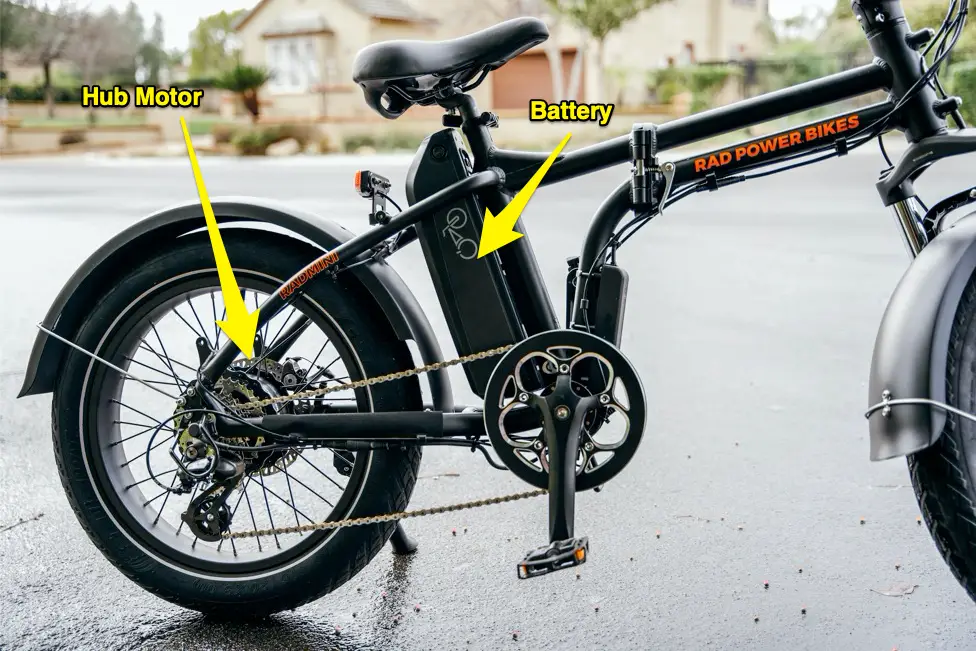
In terms of the battery, more powerful batteries are more expensive. They will last longer per charge and therefore get you further or allow you to use more of the motor when riding. However, this is sometimes undesirable, particularly in bikes where weight is an issue.
On average it costs $500-$800 to replace an e-bike battery, with these batteries lasting around 3 years. Some people might get 10 years out of their battery, depending on how often they use their bike. Every battery has a finite amount of recharge cycles and will die eventually.
Find out how to get longer usage of your battery with these 15 tips.
Tire Technology for Electric Bikes
Bike tires cost $30-$40 on average but can be as much as $100 depending on the style. The more expensive tires are generally electric mountain bike tires because they have to endure rougher conditions.
But technology makes a difference too. Some tires have the stock-standard tire tube that you can replace. Others are tubeless with Kevlar technology to prevent punctures. Obviously more sophisticated tires will cost you more.
Keep in mind that e-bike tires are generally replaced every 1-2 years. So finding a tire that is not likely to puncture before the tread becomes too worn is going to be the most cost-effective.
Electric Bike Accessories (not typically included)
Adding helpful accessories make a huge difference to the price, and it’s easy to get carried away by all the bells and whistles that are available.
Common e-bike accessories you might want are:
- Helmet
- Baskets
- Racks
- Clip-on bags
- Lights
- Side mirror(s)
- Mudguard
- Added suspension
- Tools
- Bell
- Anti-theft system
- Drink bottle holder
- Spare battery
- Bike Locks
And the list goes on. Every manufacturer is slightly different, but you’ll struggle to find an e-bike with a price that includes a lot of cool gadgets. Instead, they’ll likely include just a few to get your attention.
Check out our recommended gear and accessories
Online and Direct-to-Customer E-Bikes
Traditionally, bike manufacturers would produce a bike and sell that bike in a shop. These days, there’s also the option to sell the bikes online and send them straight from a warehouse to the customer.
This opens up a few options for manufacturers to sell their bikes.
Selling an e-bike online is the cheapest method available. However, this can sometimes make it harder to give customers the peace of mind that they’ll like the bike they are buying. This is why many online manufacturers will offer a trial period where the customer can return the e-bike if they don’t like it.
But the benefit in this situation is that the manufacturer can sell the e-bike for cheaper because they don’t have to pay for a shopfront.
This is exactly why buying a bike from a physical shop can make the prices rise. Either the manufacturer is paying for their own shop on a direct-to-customer basis, or they are paying to have their bike stocked in a general bike/sport shop.
Electric Bike Manufacturing Location
Where the bike is made also makes a difference to the price.
One obvious factor is shipping costs. If the bike is made in your own country, you may be eligible for free shipping, or could just go and pick the bike up yourself.
If it’s made in a different country, the shipping costs and taxes will filter down to the final price tag.
Check out the best brands for your money in the USA and UK.
What Are the Different Types of E-Bikes (and Their Cost)?
There are many different uses for an e-bike, which is why manufacturers have various options available, at different prices, to suit your needs. You can use any type of e-bike, but some will be equipped with features that’ll make things easier for you if you choose the right one. The most common types of e-bikes are as follows:
- Cruisers
- Mountain e-bikes (eMTB)
- Electric Road bikes
- Cargo e-bikes
- Folding electric bikes
Cruiser E-Bikes
Average cost: $3,050
These electric bikes are designed to be comfortable and easy to ride. They can be used to get someone from point A to B, such as a commuter e-bike, or to go for a leisurely ride in the park.
This is why cruisers are usually fitted with some form of cargo provision, like a rear rack, and generally have cushioned seats that are upright. The frames can still be the traditional diamond shape, but many cruisers have a step-through frame to make them easier to mount.
Because cruiser e-bikes are not necessarily designed for speed and have more features that make the ride more comfortable, they tend to be quite heavy.
They’ll usually come with a wide variety of accessories and be customizable to suit your needs. The bike itself may not cost too much, but if you get lost in adding too many accessories, the price can add up quickly.
Electric Mountain Bikes
Average cost: $4,150
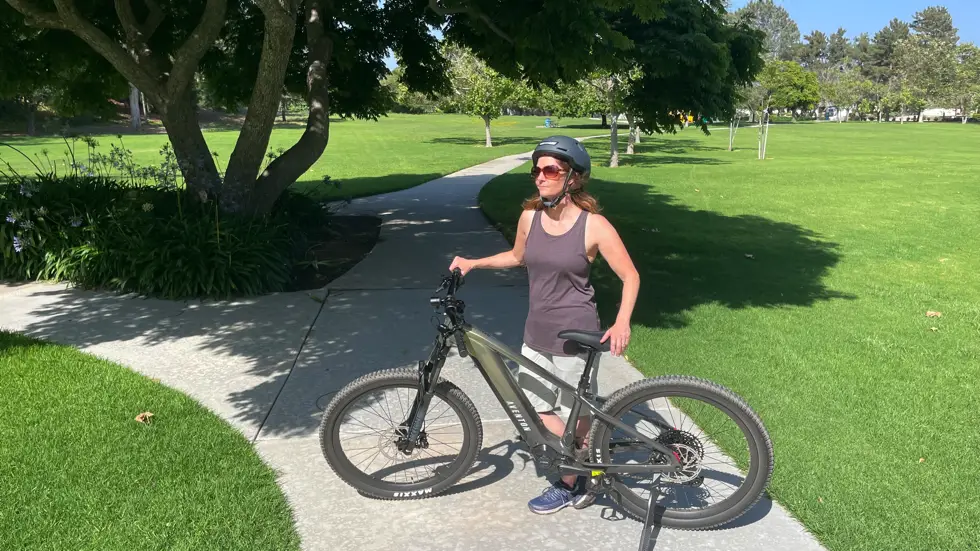
E-Mountain bikes, also known as eMTBs, are definitely built for adventure. They are designed to travel on any terrain, conquer hills and withstand jumps and sharp turns. Having motor assistance means you can get up the hills easier and ride back down faster.
Mountain bikes generally come with large thick wheels, allowing you to ride over rocks, sand, or mud without any issues. They have more suspension than other e-bikes so that the uneven terrain doesn’t cause too much of a jolt.
Unfortunately, e-MTBs are harder to handle than regular mountain bikes because of the heavy battery and motor weighing the bike down. But the added power means you can travel further than you can on a regular mountain bike, and climb hills that might’ve been too hard before.
Of all the electric bikes, e-mountain bikes tend to use the most battery power because of all the hills and rough surfaces. For this reason, they tend to require higher quality components, which is what drives the price higher.
Electric Road Bikes
Average cost: $4,750
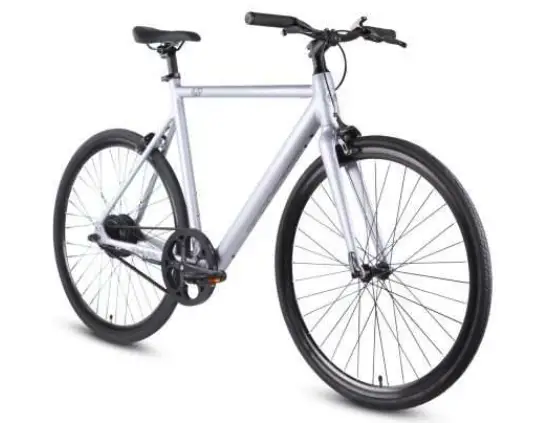
Road e-bikes are one of the newest developments in the e-biking world. They are designed to go long distances and to reach high speeds. This is achieved through lighter frames (with electric bikes as light as 25 lbs). They also tend to have the drop-bar handlebars that you may have seen on traditional road bikes. This means the rider can lean forward to create a more aerodynamic experience.
Unfortunately, the speed-limiting regulations for e-bikes mean that once you hit a speed of 28mph (or 15.5mph in Europe), you are left to pedal on your own. At this point, the battery and motor are of no benefit to you and just add weight to the bike. This is why some serious cyclists still prefer traditional road bikes.
The lightweight carbon frames and other materials are what make these e-bikes so expensive. It is very hard to make an e-bike light because of the battery and motor, so more effort and better technology is required.
Want more details on costs for the different types of e-bikes?
Cargo E-Bikes
Average cost: $3,300
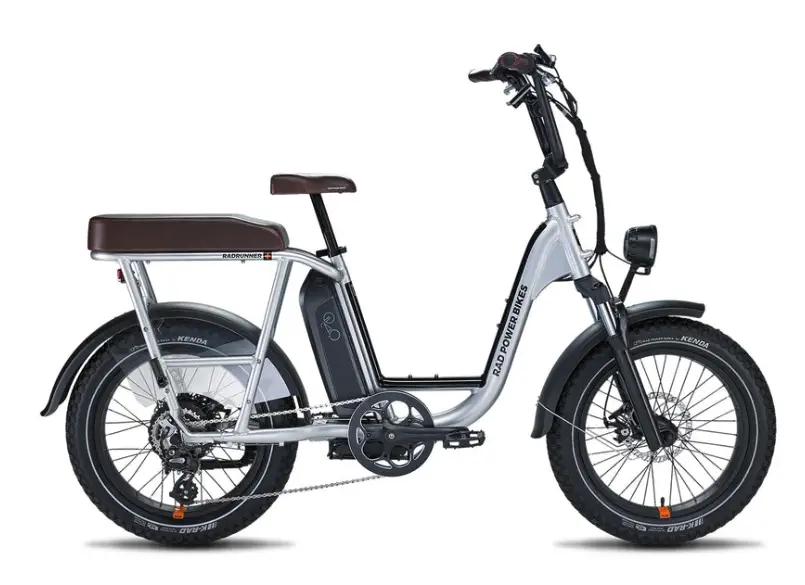
Cargo e-bikes are able to carry large loads, and usually have alternative shapes to accommodate this. They may have a large basket at the front or rear of the bike or a large low rear rack.
These are another type of e-bike that will offer a multitude of accessories. The bike itself is a decent price, but isn’t going to cause too much damage to your wallet. But if you want every accessory that’s offered, you may run into a large cost at the end.
They’re built to be sturdy, so most cargo bikes will have smaller fat tires. Some models may even have an extra wheel called a trike. They often have powerful motors to handle the bigger load that the bike can carry.
Unfortunately, because of their heavy load, these e-bikes will drain your battery a lot faster than a lightweight e-bike when fully loaded. If the manufacturer chooses to increase the range of the bike, this means a heavier battery must be used, further increasing the weight of the bike.
Common uses of a cargo bike are:
- Transporting children
- Shopping trips
- Carrying work gear (laptops, bags, briefcase, etc.)
- Deliveries
Folding E-Bikes
Average cost: $1,750
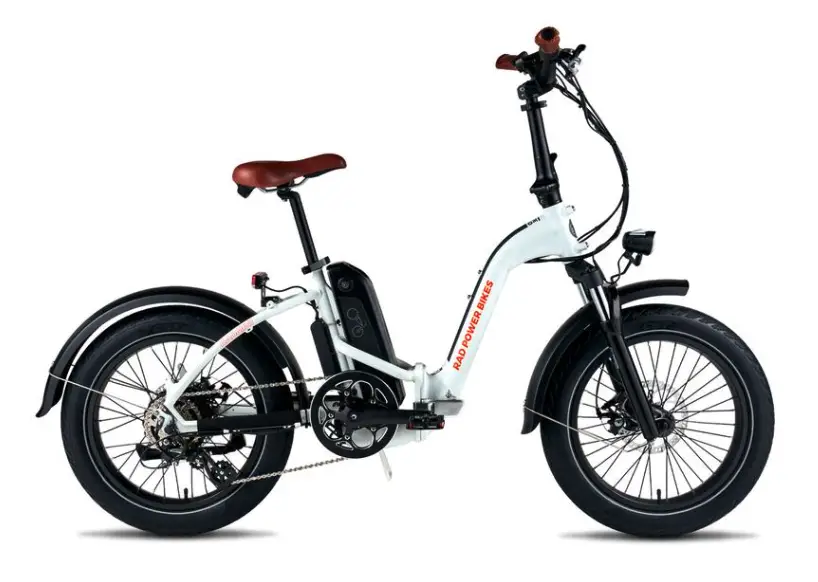
Wondering what are the different types of e-bikes that fold? Foldable e-bikes are designed to be compact and carried into confined spaces. They are usually the smallest of the electric bikes, even when unfolded, due to smaller tires. Some of them are lightweight, making them easier to carry. However, many are on the heavier side of electric bikes, especially those that are hybrid and travel over multiple terrains.
The lighter-weight ones are ideal for someone who uses public transportation, travels a lot, or is storing their electric bike in a small house.
Because their size and portability are a priority, these electric bikes can sometimes have inferior components such as smaller batteries, to reduce their weight and bulkiness.
Like cargo e-bikes, foldable e-bikes tend to have smaller tires, which may or may not have wider, “fat” tires. The frames may appear out of proportion because manufacturers need to find a balance between compact size and accommodating the height of an adult rider.
Get more details on the costs of a foldable e-bike in this article.
Running Costs of an E-Bike
As well as the up-front costs of an e-bike, there will also be ongoing running costs that you should consider. In saying that, an e-bike is still one of the cheapest “vehicles” to run.
First, you’ll use electricity to recharge your e-bike after every use. This is a tiny amount of money when you consider the cost of electricity and how much electricity is required to recharge the battery, but it is a factor and can still add up over time.
You’ll also need to service your e-bike to make sure it stays in working order and is safe to ride. Some people may choose to work on it themselves, but it’s still recommended to have a qualified technician look over it at least once a year. This is particularly important for the motor and other electrical components that are quite complicated.
On average, it costs around $150 to have your electric bike serviced, and it’s up to you how often this occurs. But, as I mentioned, you should do this at least once a year, or every 3-6 months if you are using the e-bike regularly.
Read the complete, step-by-step e-bike maintenance guide.
Overall running costs are estimated to be around $200 each year for the first three years, which then become more expensive as the bike ages. After three years, the average running costs jump to $518 per year.
This is because, as time goes on, you may also need to replace different components, which can cost hundreds of dollars.
Finally, you won’t want to forget about all of the gear you’ll need… or want… to make your e-bike as enjoyable, comfortable, and convenient as possible. There are at least seven things you absolutely need, but there are also many others. Check out E-Biking Today’s Recommended Gear List.
Conclusion
Overall, e-bikes can be a really good investment if they’re replacing other modes of transport such as driving a car. There are so many factors that contribute to the price which makes it easy to find bikes that are of good value.
I hope this article has helped in your understanding of the different types of e-bikes and how much they can cost.

